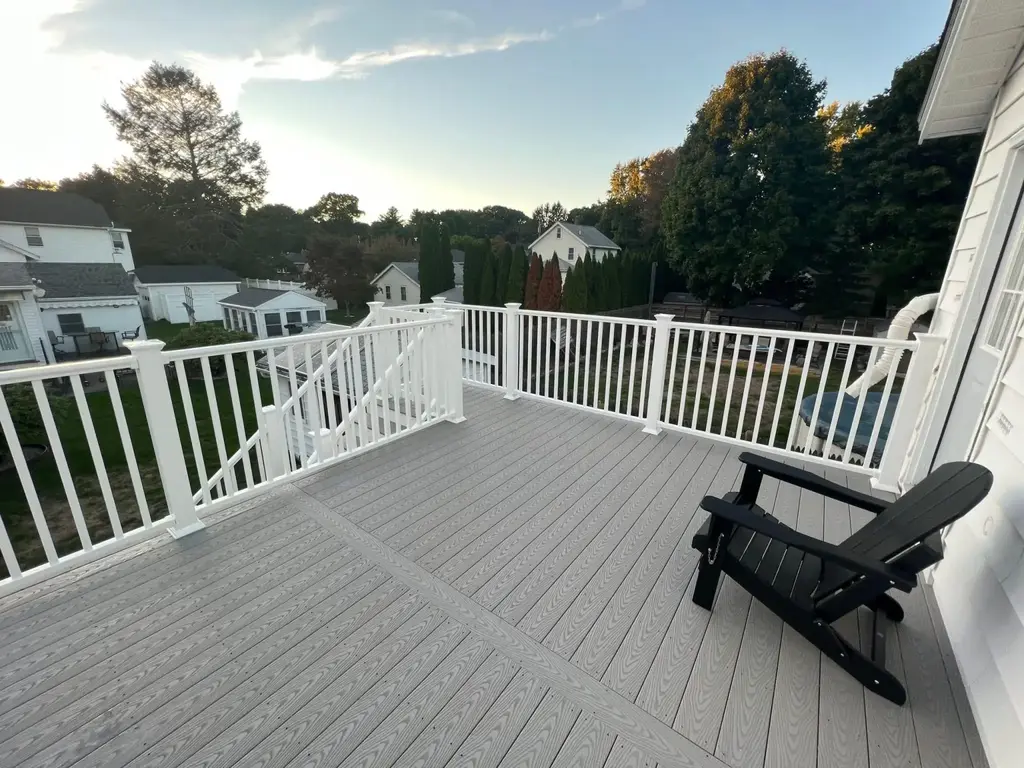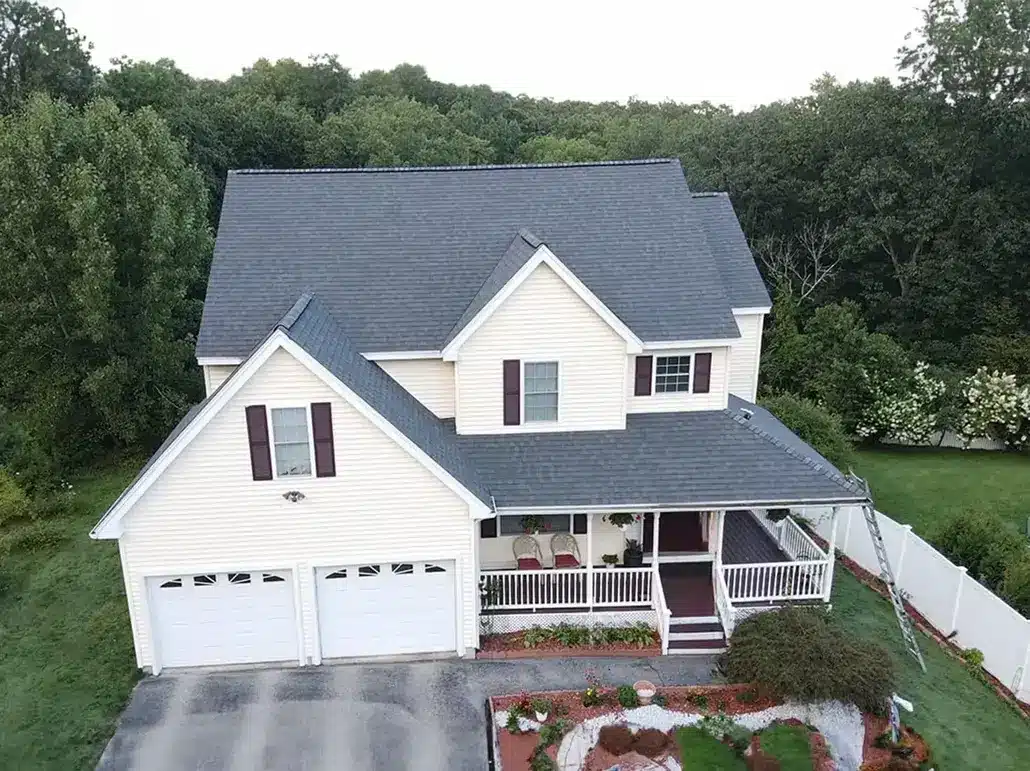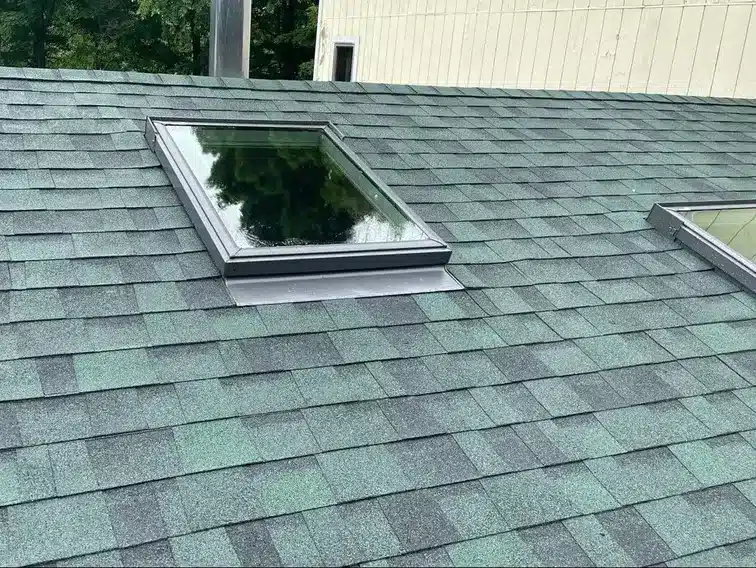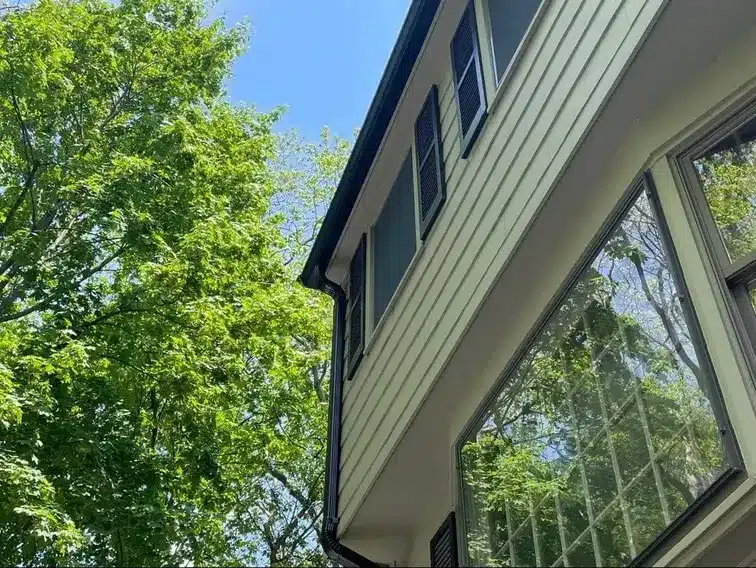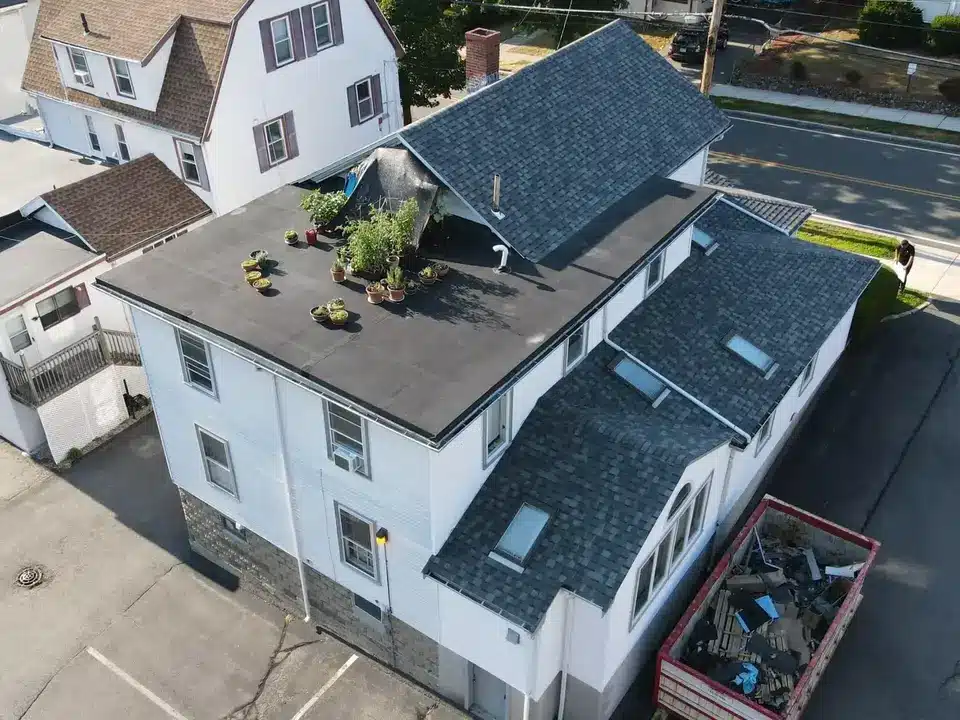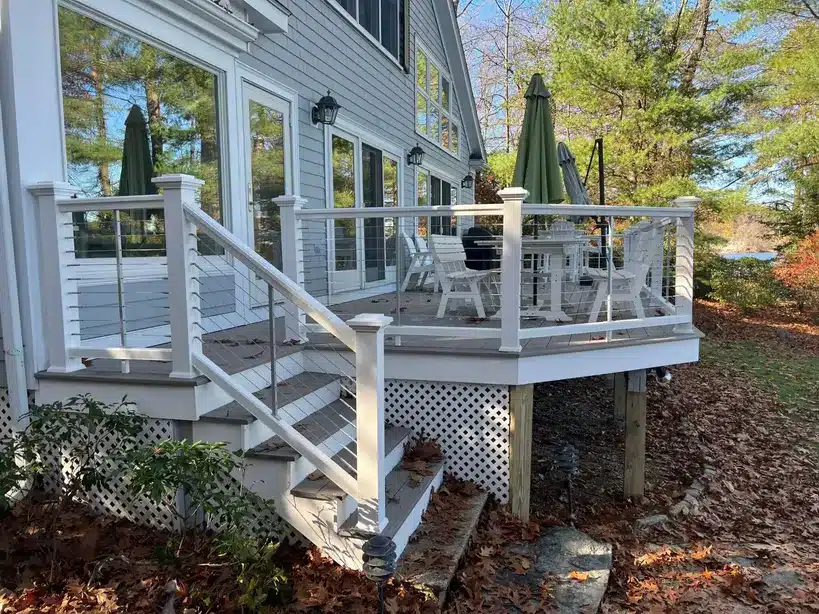
- 5.0 from 90+ reviews
Roof Installation
in Boston, MA
Our expert roof installation in Boston, MA delivers precision craftsmanship using top-tier materials. Whether you’re building a new home or upgrading an existing roof, we provide durable, weather-resistant roofing solutions to ensure long-term protection and energy efficiency.
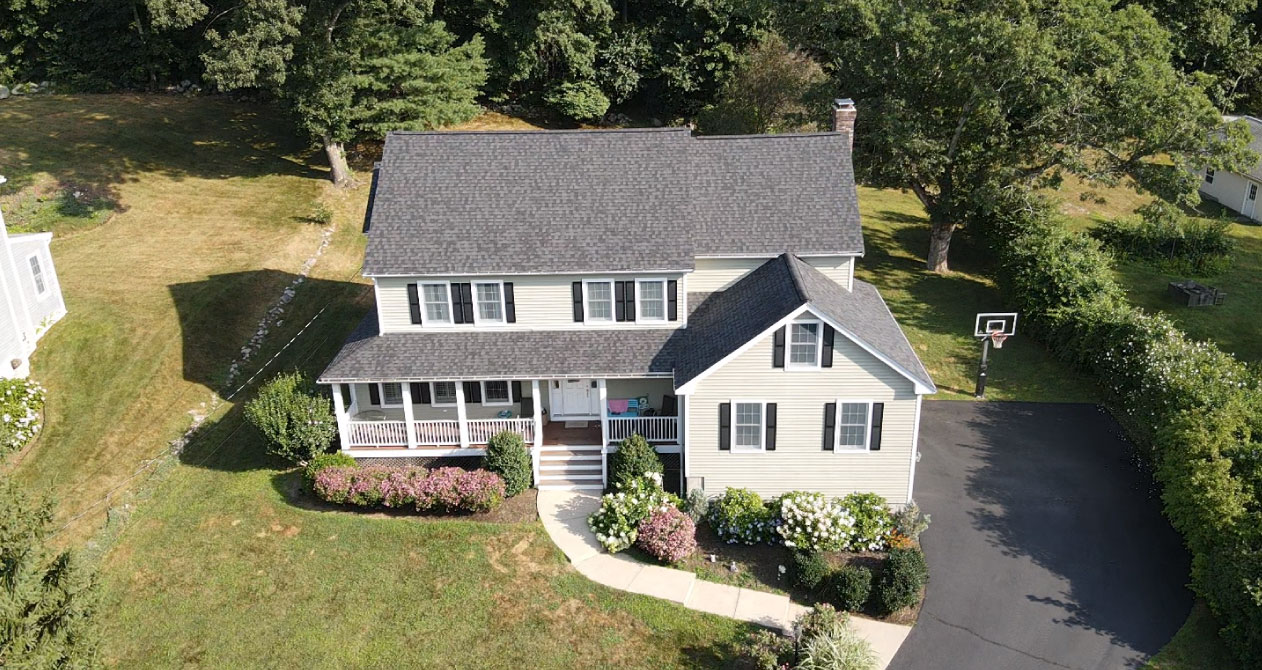






FEATURES
Why Choose CAN Roof Construction for Roof Installation in Boston?
A new roof installation in Boston, MA is one of the most significant investments you can make for your home or business. Whether you’re constructing a new property or upgrading your existing roof, professional installation ensures long-term durability, energy efficiency, and structural integrity.
At CAN Roof Construction, we don’t just repair roofs – we build them to last. Our expert roof installation services use high-quality materials and precision craftsmanship to deliver a roof that enhances both protection and aesthetics for decades.
Best Roofing Materials for Maximum Performance in Boston, MA
A well-installed roof starts with selecting the right materials. We offer a variety of top-rated roofing options, ensuring that every installation meets your durability, style, and budgetary needs:
- Asphalt Shingles. Industry-leading brands GAF, Owens Corning, and CertainTeed provide high wind resistance, long lifespan, and enhanced curb appeal.
- Metal Roofing. Designed for 50+ years of longevity, metal roofs offer superior energy efficiency, fire resistance, and minimal maintenance.
- Rubber Roofing. Ideal for flat and low-slope roofs, providing seamless waterproofing, UV protection, and energy savings.
- Slate & Tile Roofing. The ultimate long-term investment, with aesthetic appeal, extreme durability, and over a century of lifespan.
Our expert team helps you choose the best material for your property, ensuring that your new roof enhances energy efficiency, weather resistance, and overall home value. Looking to enhance your roofing system? Consider pairing your roof upgrade with our gutter replacement services for better drainage or skylight services to increase natural lighting.
Precision Installation by Certified Experts
A roof is only as strong as its installation. At CAN Roof Construction, we exceed manufacturer standards to ensure a flawless, long-lasting roofing system. Our installation process includes:
- Expert craftsmanship backed by certifications from GAF, Owens Corning, and CertainTeed.
- Precision installation techniques that prevent common roofing failures like leaks, poor drainage, and weak seams.
- Advanced ventilation & insulation solutions to improve energy efficiency and interior climate control.
- Meticulous flashing and waterproofing to protect chimneys, skylights, and roof penetrations from leaks.
- Full compliance with Boston building codes, ensuring safety, reliability, and regulatory approval.
Not sure if you need a full replacement? Schedule a drone roof inspection to detect hidden damage before making a decision!
Comprehensive Roof Assessment & Transparent Pricing
Before installation, we conduct a thorough property assessment to determine the best roofing solutions for your needs. Using drone imaging and infrared scanning, we evaluate:
- Structural integrity, ensuring your home or business can support the selected roofing material.
- Moisture detection, identifying hidden leaks that need roof repair before installation.
- Ventilation efficiency, ensuring optimal airflow to extend the lifespan of your new roof.
We believe in 100% transparency – every project includes a detailed cost breakdown, covering materials, labor, and additional services, so there are no hidden fees. The price we quote is the final price you pay, and we offer flexible financing options to make your roof installation in Boston MA more affordable.
Boost Energy Efficiency & Home Value
A professionally installed roof not only protects your home but also enhances energy efficiency and property value. Our modern roofing solutions:
- Reduce heating & cooling costs by incorporating high-performance insulation & ventilation.
- Lower heat absorption with reflective roofing materials, minimizing indoor temperature fluctuations.
- Increase resale value, with a new roof offering one of the highest ROIs in home improvement.
A high-quality roof installation improves indoor comfort, reduces energy waste, and adds immediate curb appeal to your property – schedule your FREE roof inspection today and take the first step toward a stronger, more efficient roof.
Seamless Process with Minimal Disruption
At CAN Roof Construction, we make roof installation in Boston, MA a smooth, hassle-free experience. Our streamlined process ensures:
- Quick turnaround times – Most installations are completed within 1-3 days.
- Thorough site cleanup – We leave your property pristine and free of debris.
- Flexible financing options – Making premium roofing affordable for every homeowner.
From initial FREE consultation to final inspection, we handle every aspect of your new roof installation with professionalism, precision, and care.
Schedule Your Roof Installation with CAN Roof Construction Today!
If you’re planning a new roof installation in Boston, trust CAN Roof Construction for exceptional craftsmanship, industry-leading materials, and superior service. Whether it’s a residential home or a commercial property, we provide tailored roofing solutions that ensure lasting protection and long-term value.
Contact CAN Roof Construction today for a FREE consultation and expert roof installation services!
Projects
Showcasing Our Work in Every Detail
Step into the world of CAN Roof Construction and discover a gallery of our finest roofing projects in Boston, MA. From sturdy roofs to elegant decks, skylight installations to efficient gutter systems, we’ve got it all covered. Browse all our projects now to see how we can transform your home!
guarantee
Reliable Roofing in Boston for Years to Come
We guarantee durable, high-quality roofing with expert craftsmanship and long-term protection.
-
10-Year Roofing Warranty for Boston Homes & Businesses
We are deeply committed to ensuring the excellence of our roofing materials, and as a testament to our confidence, we offer a comprehensive 10-year warranty to provide you with the utmost peace of mind.

-
Quality Guarantee for Superior Roofing Materials
Our skilled team in Boston takes great pride in their craftsmanship and is dedicated to ensuring that only the most superior, weather-resistant roofing materials are used to enhance and extend the lifespan of your roof.

reliable
Your Trusted Choice for Roof Installation
A professionally installed roof is crucial for long-term structural integrity and weather resistance. Our expert roof installation in Boston, MA services focus on precision, high-quality materials, and long-lasting results to protect your home for years to come. Whether you’re upgrading your roof or installing a new one, we ensure superior durability and energy efficiency with every project.
Versatile
Offering architectural shingles, metal, slate, and rubber roofing options for superior customization.
Durable
Manufactured with industry-leading materials, ensuring resistance to wind, fire, and extreme weather conditions.
Seamless Installation
Installed with meticulous attention to detail, exceeding manufacturer standards for leak-free protection.
Energy-Efficient
Incorporates advanced insulation and ventilation to improve indoor comfort and reduce energy consumption.
Let's Fix Your Roof!
FAQ
Find Answers to
Your Roof Installation Questions
Several factors impact the cost of roof installation, including the type of roofing material, the size and slope of the roof, accessibility, and the extent of any necessary roof repairs. To get an accurate estimate, a thorough inspection by roofing professionals is essential to assess your specific needs and provide a detailed proposal.
Our roof installation process begins with a thorough assessment of your property, followed by a detailed proposal. Once approved, our experienced team handles the removal of old roofing, prepares the surface, and installs the new roof using high-quality materials. Throughout the process, we prioritize open communication to keep you informed about every stage of the installation.
The duration of roof installation in Boston varies based on factors such as the size of your roof, weather conditions, the complexity of the project, and whether skylight installation is included. On average, a standard residential roof installation can take anywhere from a few days to a week. Our team will provide you with a more accurate timeline during the consultation process.
CAN Roof Construction follows a streamlined process, starting with a thorough free consultation and property roof inspection. We provide a detailed proposal upon understanding your needs, and our expert team ensures constant communication throughout the construction process, prioritizing quality and safety.
